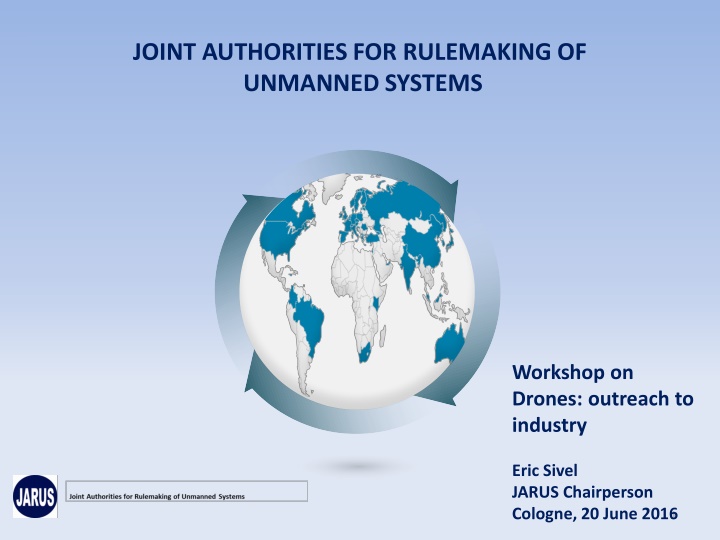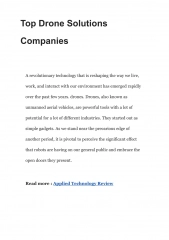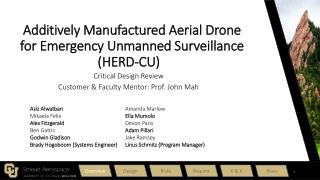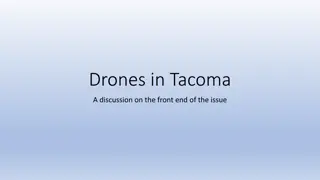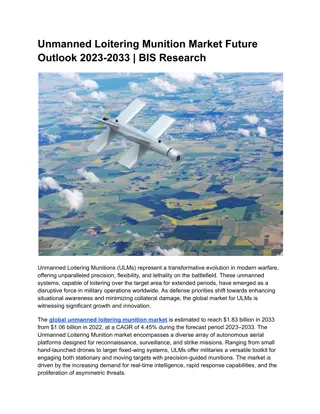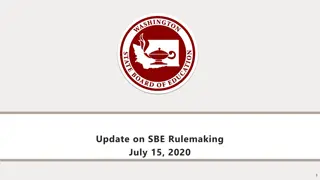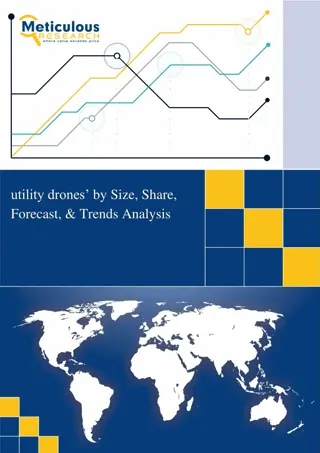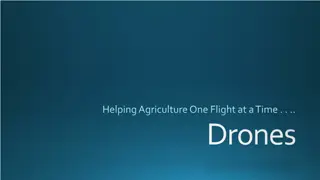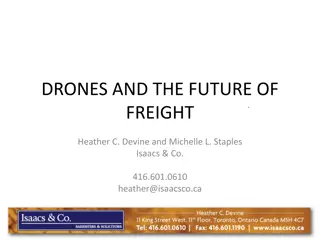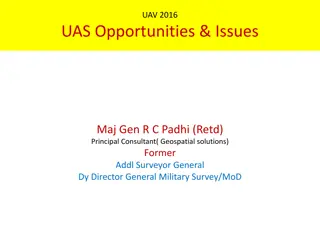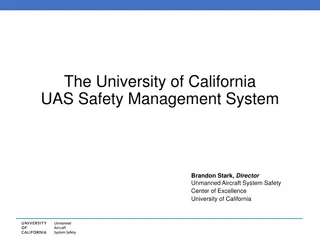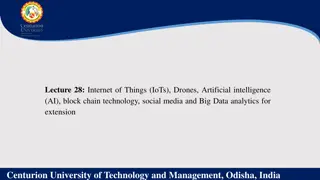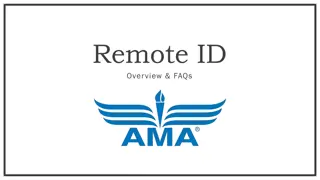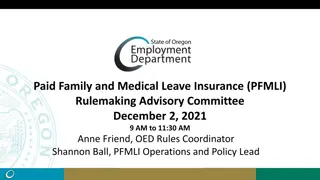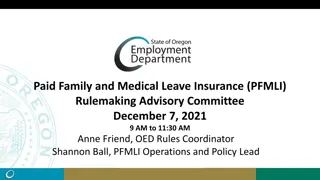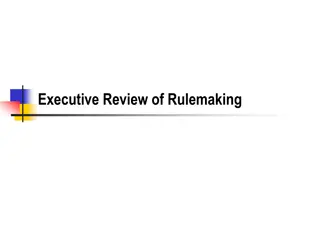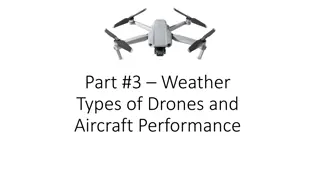Workshop on Drones: Joint Authorities for Rulemaking of Unmanned Systems
This workshop on drones, led by Eric Sivel, the Chairperson of JARUS, focuses on establishing technical, safety, and operational requirements for certifying and integrating UAS into airspace. JARUS comprises experts from various countries collaborating to recommend guidelines and deliverables towards safe drone operations.
Download Presentation

Please find below an Image/Link to download the presentation.
The content on the website is provided AS IS for your information and personal use only. It may not be sold, licensed, or shared on other websites without obtaining consent from the author.If you encounter any issues during the download, it is possible that the publisher has removed the file from their server.
You are allowed to download the files provided on this website for personal or commercial use, subject to the condition that they are used lawfully. All files are the property of their respective owners.
The content on the website is provided AS IS for your information and personal use only. It may not be sold, licensed, or shared on other websites without obtaining consent from the author.
E N D
Presentation Transcript
JOINT AUTHORITIES FOR RULEMAKING OF UNMANNED SYSTEMS Workshop on Drones: outreach to industry Eric Sivel JARUS Chairperson Cologne, 20 June 2016 1
AGENDA General Presentation Ongoing activities JARUS Structure Recent key deliverables: SORA ATM Conops Way Forward 2
GENERAL: JARUS PURPOSE JARUS is a group of experts from its NAA members, including regional authorities originally established in 2007. JARUS members collaborate to recommend technical, safety, and operational requirements for the certification and safe integration of UAS into airspace and at aerodromes 3
GENERAL: JARUS MEMBERS New Member Countries in 2016: Costa Rica, Croatia, Kenya, Republic of Serbia EASA Member States Austria Belgium Croatia Czech Republic Denmark Estonia Finland France Germany Greece Ireland Italy Latvia Luxembourg Malta Netherlands Norway Poland Romania Spain Sweden Switzerland United Kingdom Rest of the World Australia Brazil Canada China Colombia Georgia India Israel Jamaica Japan Kenya Malaysia Qatar Republic of Korea Republic of Macedonia Republic of Serbia Russia Singapore South Africa Trinidad & Tobago Turkey United Arab Emirates United States of America International Organisation EASA Eurocontrol EASA Member States not members yet Bulgaria, Cyprus, Hungary, Iceland, Liechtenstein, Lithuania, Portugal, Slovakia, Slovenia 4
GENERAL: STAKEHOLDER CONSULTATION BODY (SCB) At the end of 2015, the SCB representing the Industry was established representing: Aircraft manufacturers (AIA, ASD) Unmanned system Industry (AUVSI, UVSI, small UAS Coalition) ANSP (CANSO, COCESNA) Standardization Bodies (EUROCAE, RTCA and ASTM) Operators and pilots IAOPA, IBAC, IFALPA, IFATCA, IATA Representatives from these organisations joined the JARUS Plenary Meeting, which took place in Madrid from 11-15 April 2016. Experts from the SCB have been invited to contribute to the JARUS Working Groups. 5
GENERAL: JARUS DELIVERABLES JARUS deliverables/products are recommended certification specifications and operational provisions made available to interested parties such as ICAO, NAAs and regional authorities for their consideration and use. JARUS does NOT develop law or mandatory standards. NAAs and regional authorities decide how to use harmonised provisions from JARUS. 6
JARUS ONGOING ACTIVITIES JARUS is contributing to the development of the RPAS regulatory framework, in the domains where other organisations (e.g. ICAO) have not been active yet, to promote a harmonised approach. Current ongoing JARUS activities will be based on initial framework priciples: UAS Operational Categorisation (i.e. open, specific, and certified) Higher level (2014/EASA/2016) Risk assessments for UAV operations (Specific operational risk assessment SORA (2017) ATM concept for different operations Higher level (2016) DAA concept for visual line of sight, extended, and beyond VLS Derived (2016) Command and control concept for different operations Derived (2016) All key deliverables will be available to the RPAS Community early in 2017 Once JARUS reaches consensus on the concepts above, operational, technical, and certification specifications will be derived from them. 7
OVERVIEW JARUS DELIVERABLES (http://jarus-rpas.org) WG Title Description Status Published 30/10/2013 Certification Specification for Light Unmanned Rotorcraft Systems Guidance material to explain the concept of C2 link RCP and identify the requirements applicable to the provision of C2 communications. The document aims at providing recommendations concerning uniform personnel licensing and competencies in the operation of RPAS Document developed as an integral part of a type- certification process. It is a means of compliance to a 1309 airworthiness requirement. It provides recommendations for States to use for their own national legislation, concerning Certification Specification for Light Unmanned Aircraft Systems. Specific Operations Risk Assessment. Recommends a risk assessment methodology to establish a sufficient level of confidence that a specific operation can be conducted safely. The Controller Pilot Data Link Communications document is meant to summarize the most relevant information about CPDLC and the supported ATS services, and to associate them with RPAS operations. This document describes the methods to derive design objectives for DAA systems based on airspace requirements. Categorization scheme that describes the level of regulatory involvement for the varying types of UAS and UAS operations. WG3 Certification Spec for LURS Published 10/10/2014 WG5 RPAS C2 Link RCP Published 09/09/2015 WG1 FCL Recommendations Published 01/11/2015 WG6 AMC RPAS 1309 (package) WG3 CS-LUAS Internal Consultation WG6 SORA Internal Consultation WG5 CPDLC To be soon published WG4 Detect and Avoid Internal Consultation WG7 RPAS Operational Categorization Internal Consultation WG1 FCL GM Guidance material to the JARUS FCL Recommendation Internal Consultation 8
WORKING GROUPS STRUCTURE FLIGHT CREW LICENSING (FCL) CONOPS WG 1 OPERATIONS (OPS) WG 6 WG 2 SAFETY & RISK MANAGEMENT WG 7 WG 3 WG 5 AIRWORTHINESS WG 4 COMMAND AND CONTROL DETECT & AVOID 9
WORKING GROUPS (WGs) 1/2 WG 1 Flight Crew Licensing (FCL) o Requirements for licensing and competencies in RPAS activities; o Pilot licensing and training WG 2 Operations o Operational requirements for access to airspace o Organizational requirements for RPAS operations WG 3 Airworthiness o UAS certification & airworthiness provisions/specifications for: Rotary wing, Light Unmanned Rotocraft System (CS-LURS) Fixed wing, Light Unmanned Aeroplane System (CS-LUAS) Very light UAS (VL lUAS) Airships, free/tethered balloons 10
WORKING GROUPS (WGs) 2/2 WG 4 Detect and Avoid o Define performance provisions (operational/technical) o Establish safety objectives for the risk of collisions WG 5 Command, Control & Communications o Establish performance provisions (operational & technical) for C3 WG 6 Safety and Risk Management o Define top level RPAS airworthiness, system safety objectives and guidance material (known as AMC RPAS.1309) o Establish UAS recommendations & conclusions on UAS failure classifications in terms of severity definition and probability requirements. o Create a methodology to assess the risks of specific RPAS operations and evaluate relevant mitigations WG 7 Concept of Operations (CONOPS) o Develop a classification scheme for RPAS o Considerations for RPS Certification, C2 & signal relay and launch and recovery equipment 11
Specific Operation Risk Assessment (SORA) Enables the Specific operations Accounts for type, scale, complexity of the activity, third parties at risk Holistic and not atomistic Focus on objectives rather than means Allows for scenario determination Allows for continuous improvements (iteration loops) Developed with stakeholders 13
Specific Operation Risk Assessment (SORA) Recommended level of rigor Open Specific Certified -Operational -Design -Production Intrinsic risk of UAS operation
SORA Specific Assurance and Integrity Level (SAIL) evaluation SORA Output SORA Input Objectives to be met and their (level of robustness): Concept of Operations Ground Risk Class Air Risk Class SAIL I: 18 (Low) SAIL II: 19 (Low), 6 (Med) SAIL III: 11 (Low), 15 (Med), 6 (High) SAIL IV: 3 (Low), 19 (Med), 12 (High) SAIL V: 6 (Med), 28 (High) SAIL VI: 35 (High) Information on: - Operator - Intended operation - UAS description - Remote crew Lethality SAIL determination SORA Annexes Feedback loop for continuous improvements 15
Specific Operation Risk Assessment (SORA) The SORA is in internal JARUS consultation (via JARUS website). Comments from JARUS members and te SCB are welcome! A link with industry standardization bodies will be established to develop guidance material 16
RPAS ATM CONOPS Is flexible: it is independent from continuously evolving scenarios Is generic: it addresses any RPAS category or technology Is operationally oriented: it provides an operational ATM perspective based on areas of operations Is opening the door to standardized contingency procedures Is based on the following logic Area of operation Class of traffic Class of airspace Category of RPAS (from EASA CONOPS) NB: This CONOPS is a draft, it is as of today not validated. 18
What is a Class of RPAS traffic ? As RPAS are very difficult to categorise due to the large variety of shapes, sizes, performance and operations; different traffic classes have been developed to support the management of large numbers of RPAS operations. A Class of RPAS traffic is a set of flying rules, operational procedures and system capabilities applicable to the RPAS and to the operator when operating the RPAS in a portion of the airspace. A Class of RPAS traffic is supported by CNS services external to the operator. 20
WAY FORWARD Increased JARUS participation already anticipated from both NAAs and industry Increased coordination facilitated by new organization (e.g. Secretariat, regional offices) Valuable contributions to ICAO efforts from members/advisors involved in JARUS & ICAO Continuing need for increased membership and resource commitments from ALL 21
Questions +32 2 729 3629 +32 2 8013 902 contact@jarus-rpas.org http://jarus-rpas.org/ 22
